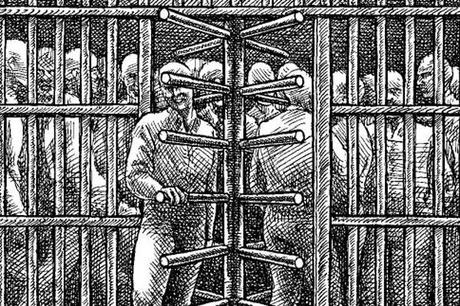
Guest Post by Daphne Holmes
While some believe inmates languish in luxurious settings, with too many creature comforts, prison reformers paint a much bleaker picture of the conditions plaguing inmates in federal and state corrections facilities. Penalties like solitary confinement, for example, are seen as inhumane and ill-suited for rehabilitating criminals.
Wherever you stand on prison reform, it is hard to deny a link between the way we function as a society on the outside, and the way we mete out punishment for those serving time on the inside. Compassion and empathy are central to human interactions outside prison walls, so they should also play roles in the way inmates are rehabilitated. Until we establish effective programs to break the cycles of crime and recidivism, natural order will continue to be elusive on the streets. Viewed in this light, prison reform holds real potential for supporting a more peaceful society.
Balance is Essential to effective Corrections Policy
Corrections systems are tasked with protecting law-abiding citizens from harm, by incarcerating offenders. But the system is also responsible to maintain a balancing act between punishment and rehabilitation, which are not always administered equitably. The best outcomes are seen when prisoners have opportunities to better themselves, so that positive contributions to society become distinct possibilities for those committed to legitimacy once they are released.
And balancing management and administration of prisons and their populations furnishes the other relevant piece of the equation. Without adequate resources, the most progressive prison reform policies fall flat. In many cases, finding funds and support for reforms is difficult, because the cost of change outweighs the potential benefits seen by decision-makers.
Effective reform trims operating costs to reasonable levels, allowing correction systems to implement productive results-driven programs to treat, train, and educate inmates. By balancing these opportunities, while still implementing tough corrective standards, corrections facilities and penal agencies serve their functions equally and construct positive long-term outcomes.
Segregation in Prison Leads to Isolation upon Release
Solitary confinement or segregation, as it is often called, removes prisoners from general populations, placing them in isolated settings. The strategy has long been used to discourage disruptive activity among inmates. Terms in solitary are earned for misbehavior, so the practice is seen as a deterrent, which keeps inmates in line.
In practice, solitary confinement can have serious impacts on inmates’ health and vitality. Long periods of isolation are counterproductive, according to prison reformers, who see the punishment as excessive.
There is no clear rehabilitative value to solitary confinement, and the presence of harsh isolation threats may actually serve to undermine morale and order among prison populations. While it is clear prisoners must be punished for acting out while inside, the same offenders will one-day rejoin society after being held under segregated conditions.
The message sent by harsh isolation carries through to civilian life, when released prisoners end-up holding contempt for other members of society, due to the lack of rehabilitative respect the penal system showed for them.
A more peaceful society will require compassion across all human interactions, including those within the corrections system. By rehabilitating prisoners and providing opportunities for freed inmates to contribute to their own positive outcomes, prison reformers strive to instill empathy in a system that sometimes strays from its intended mission.
Daphne Holmes is a writer from www.ArrestRecords.com and you can reach her at [email protected].
